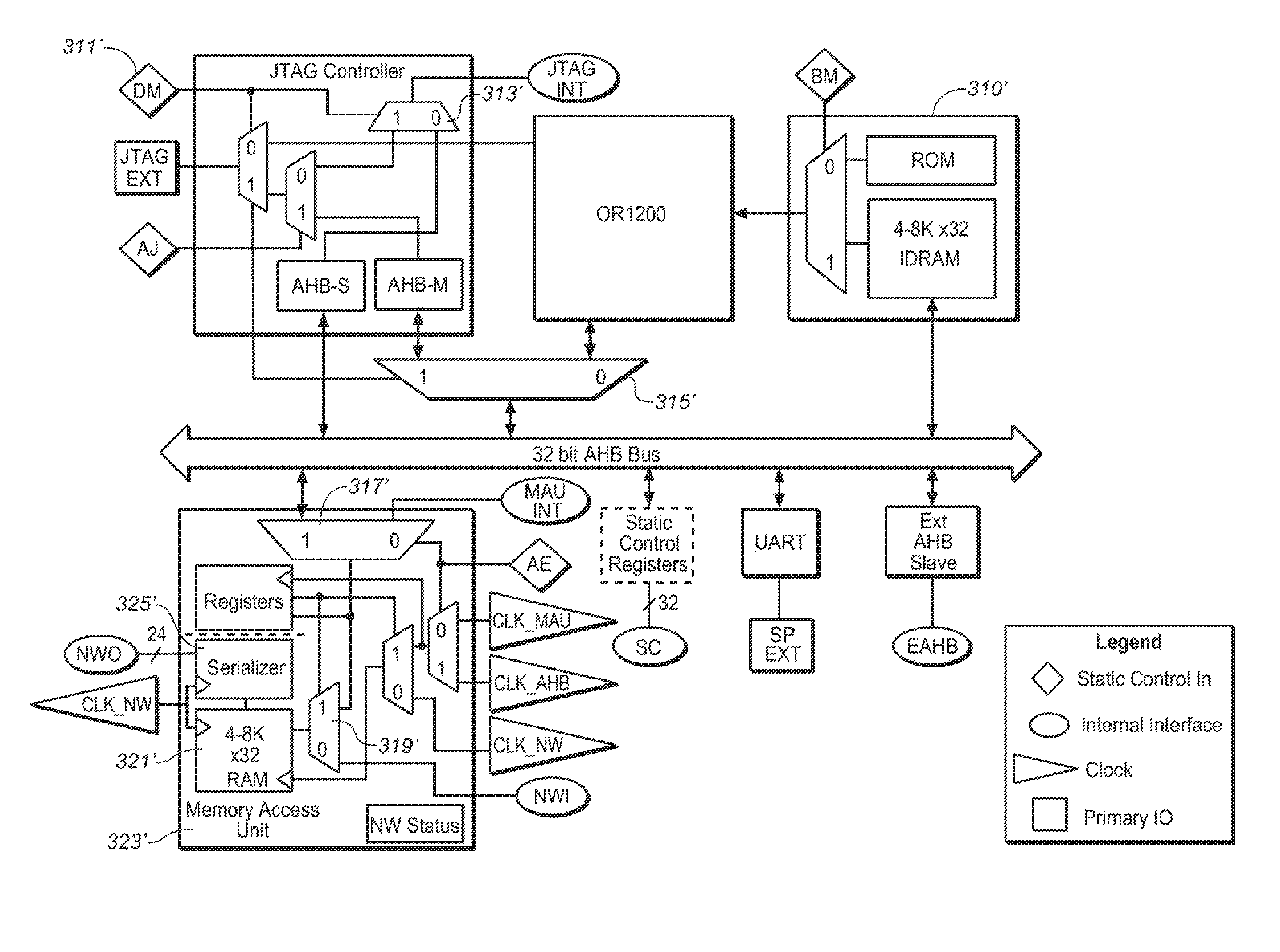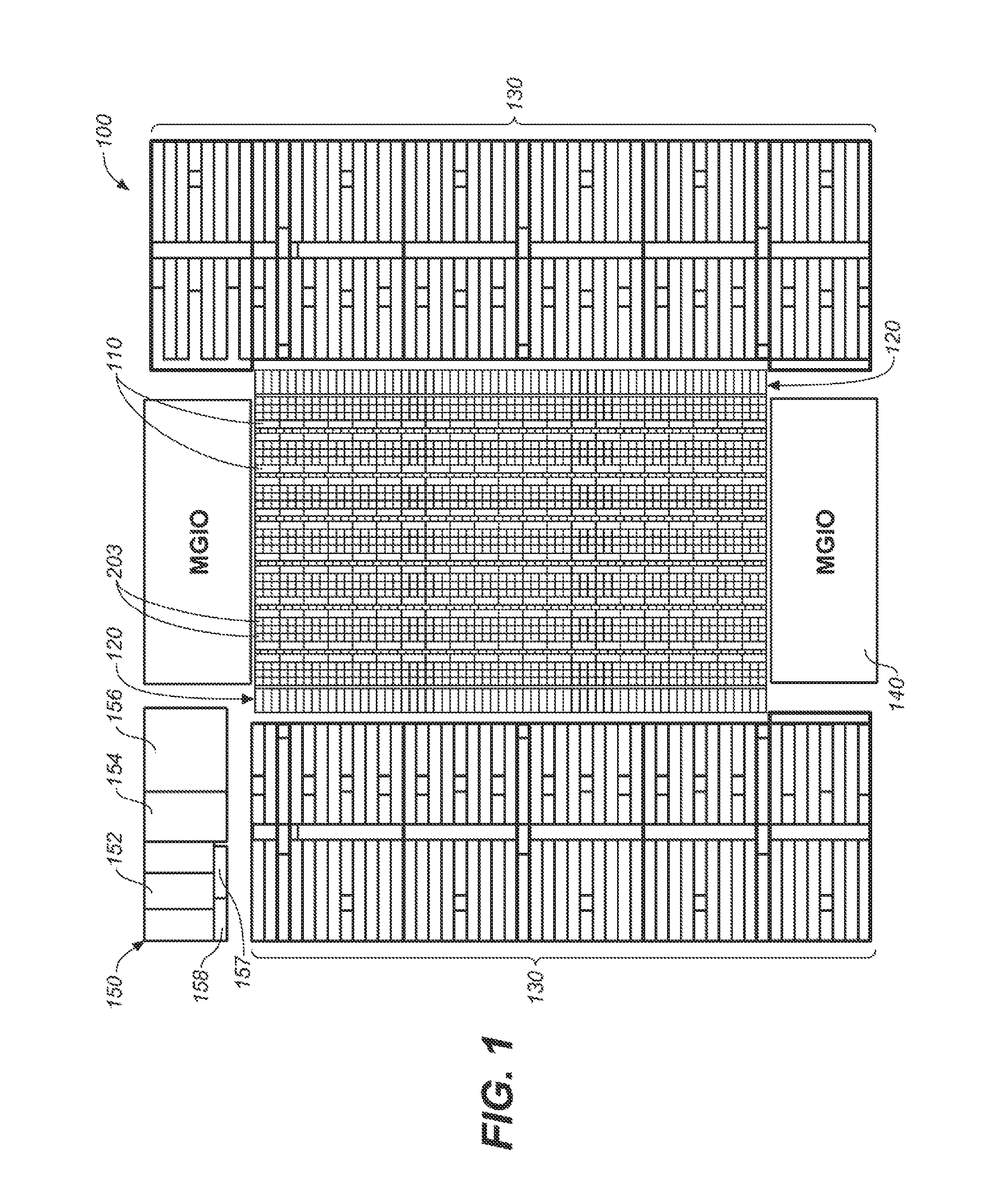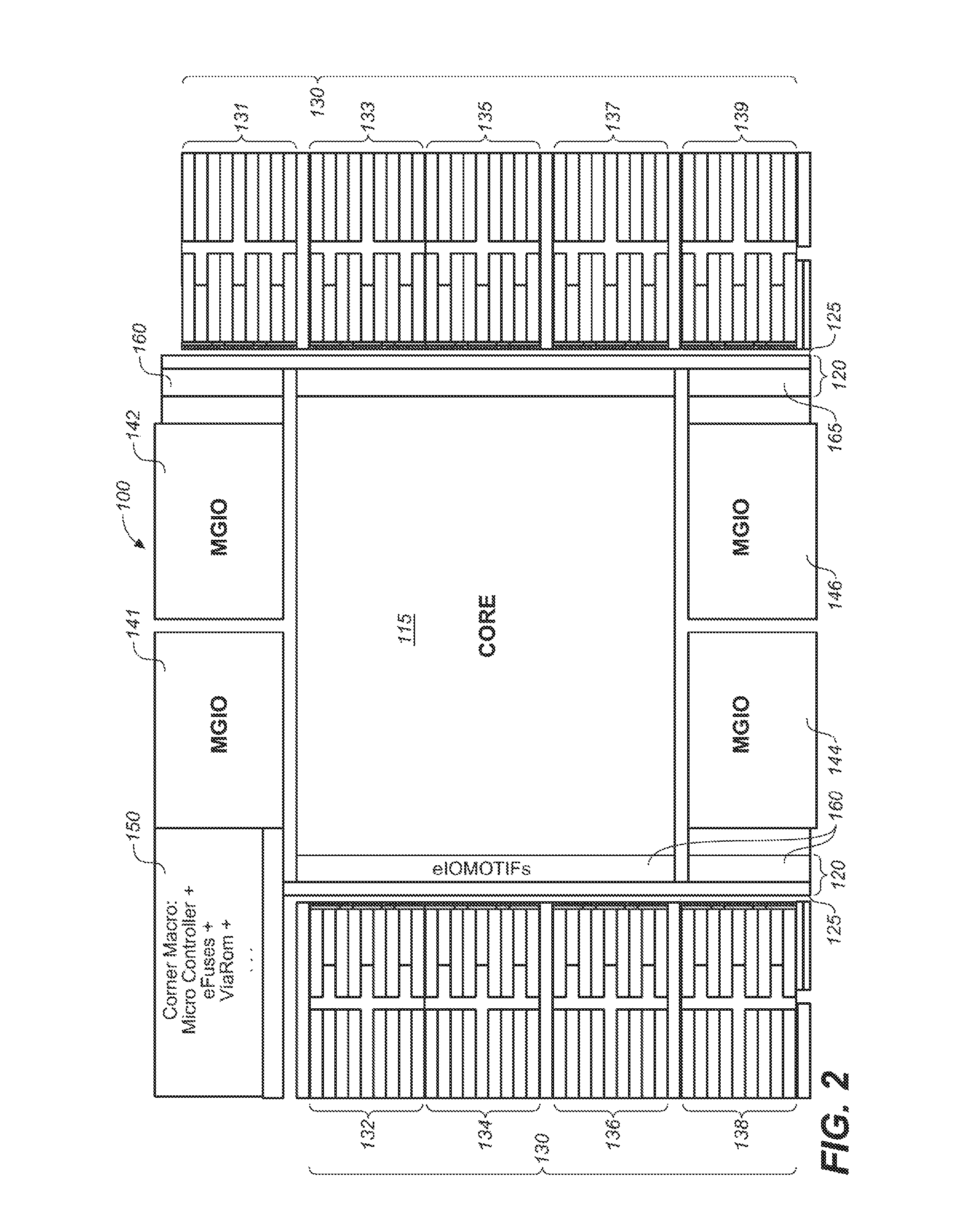Microcontroller controlled or direct mode controlled network-fabric on a structured ASIC
a microcontroller and network fabric technology, applied in the field of structured asics, can solve the problems of wasting time and effort, affecting the functionality of the system, and the components are no longer supported by modern eda (electronic design automation) software,
- Summary
- Abstract
- Description
- Claims
- Application Information
AI Technical Summary
Benefits of technology
Problems solved by technology
Method used
Image
Examples
Embodiment Construction
[0064]The method and apparatus of the present invention may be described in software, such as the representation of the invention in an EDA tool, or realized in hardwire, such as the actual physical instantiation.
[0065]Regarding the floorplan of the present invention, the drawings sometimes show elements as blocks that in a physical implementation may differ from this stylized representation, but the essential features of the floorplan should be apparent to one of ordinary skill in the art from the teachings herein.
[0066]The elements in the floor plan of the present invention are operatively connected to one another where necessary, as can be appreciated by one of ordinary skill in the art from the teachings herein. As can be appreciated by one of ordinary skill, a conducting path is operatively connected to another conducting path even though there may be an intervening element between the two paths, such as a register or buffer.
[0067]According to an embodiment of the invention, th...
PUM
 Login to View More
Login to View More Abstract
Description
Claims
Application Information
 Login to View More
Login to View More - R&D
- Intellectual Property
- Life Sciences
- Materials
- Tech Scout
- Unparalleled Data Quality
- Higher Quality Content
- 60% Fewer Hallucinations
Browse by: Latest US Patents, China's latest patents, Technical Efficacy Thesaurus, Application Domain, Technology Topic, Popular Technical Reports.
© 2025 PatSnap. All rights reserved.Legal|Privacy policy|Modern Slavery Act Transparency Statement|Sitemap|About US| Contact US: help@patsnap.com



